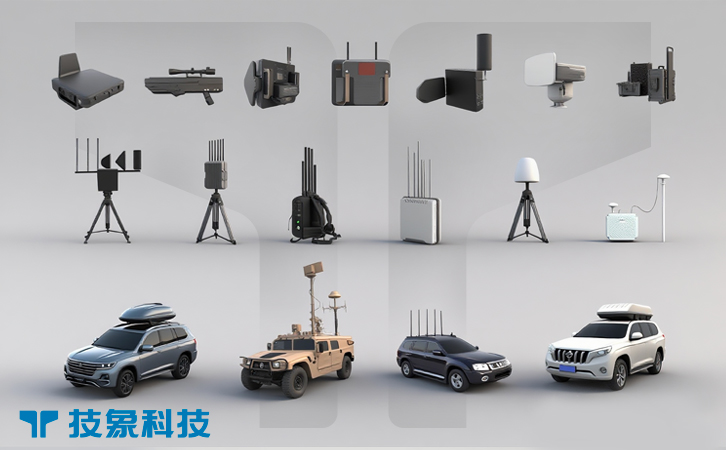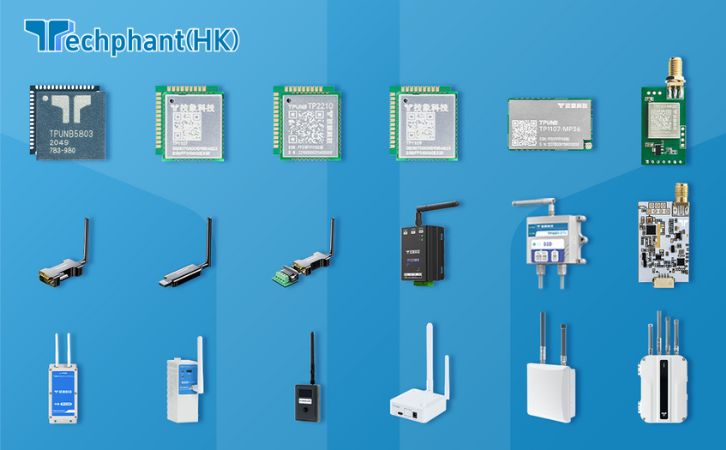The rapid rise of unmanned aerial vehicles (UAVs), or drones, has created unprecedented security challenges, from unauthorized surveillance to potential weaponized attacks. Anti-UAV defense systems have emerged as critical tools to counter these threats, relying on advanced technologies to detect, track, and neutralize rogue drones. These systems integrate a sophisticated array of sensors, communication networks, and countermeasure mechanisms to ensure airspace security. This article explores the key technologies driving anti-UAV defense, focusing on detection and countermeasure solutions, their operational principles, and their role in modern security frameworks.
I. Detection Technologies: Sensing the Threat
Effective anti-UAV defense begins with reliable detection, which requires technologies capable of identifying small, fast-moving drones in complex environments. Radar systems are a cornerstone of detection, using radio waves to locate objects at long ranges, even in low-visibility conditions like fog or darkness. Modern radars, such as phased-array or Doppler systems, are optimized for detecting drones with small radar cross-sections, distinguishing them from birds or other objects. For example, systems like the AN/TPQ-53 radar can detect UAVs up to several kilometers away, providing early warnings for large-scale deployments.
Radiofrequency (RF) sensors complement radars by intercepting communication signals between drones and their operators. These sensors analyze RF signatures to pinpoint a drone’s location, control frequency, and even its model, which is critical for identifying intent. Electro-optical and infrared (EO/IR) systems, equipped with high-resolution cameras and thermal imaging, offer visual confirmation, particularly in urban settings where radar signals may be obstructed. These systems use AI-driven image recognition to differentiate drones from other airborne objects, enhancing accuracy. Acoustic sensors, which detect the unique sound profiles of drone motors, are also used in short-range scenarios, providing a low-cost detection option for smaller perimeters. By combining these technologies, anti-UAV systems achieve multi-layered detection, ensuring comprehensive coverage across diverse environments.
II. Tracking and Classification: Precision in Identification
Once a drone is detected, tracking and classification technologies ensure it is accurately identified and monitored. Tracking involves following the drone’s trajectory to predict its path and intent, which is critical for timely intervention. Advanced radar systems employ continuous-wave tracking to maintain a lock on fast-moving UAVs, while EO/IR cameras provide real-time visual feeds for precise monitoring. Some systems integrate 3D mapping to plot a drone’s position in complex terrains, such as urban areas with high-rise buildings.
Classification is equally important, as it determines whether the detected object is a threat. AI and machine learning algorithms play a pivotal role here, analyzing sensor data to distinguish drones from non-threatening objects like birds, balloons, or authorized UAVs. For instance, machine learning models trained on RF signal patterns can identify specific drone types, such as consumer-grade quadcopters versus military-grade UAVs. This capability is crucial for avoiding false positives, which could disrupt legitimate airspace activities. Integrated command-and-control (C2) systems fuse data from multiple sensors—radar, RF, EO/IR, and acoustic—to create a unified threat profile, enabling operators to make informed decisions. These systems often use real-time data visualization tools, such as heatmaps or 3D overlays, to provide situational awareness, ensuring precise tracking and classification in dynamic scenarios.
III. Countermeasure Technologies: Neutralizing the Threat
Once a drone is identified as a threat, countermeasures are deployed to neutralize it. Non-kinetic countermeasures, such as RF jamming, are widely used due to their effectiveness and minimal collateral impact. RF jammers disrupt the communication link between a drone and its operator, often forcing the UAV to land or return to its starting point. Advanced jammers can target specific frequencies, such as GPS or Wi-Fi bands, without interfering with nearby communications. For example, systems like the DroneDefender use directional jamming to disable drones at ranges up to 400 meters, offering a portable solution for security teams.
Kinetic countermeasures, such as laser systems, provide a more aggressive approach. High-powered lasers, like those in the Raytheon High-Energy Laser Weapon System, can burn through a drone’s electronics or structure, causing it to crash. These systems are precise, with minimal risk to surrounding areas, making them suitable for military applications. Physical interception methods, such as net-carrying drones or projectiles, capture rogue UAVs intact, allowing for forensic analysis to trace their origin. For instance, the SkyWall system deploys nets to safely disable drones, preserving evidence for legal investigations. Emerging technologies, like high-powered microwave (HPM) systems, can disable multiple drones simultaneously by disrupting their electronics, offering a solution for swarm threats. Each countermeasure is selected based on the operational context, balancing effectiveness with safety and regulatory constraints.
IV. Integration and Automation: Building a Cohesive Defense
The effectiveness of anti-UAV defense systems lies in their ability to integrate detection, tracking, and countermeasure technologies into a cohesive framework. Command-and-control (C2) systems serve as the central hub, processing data from multiple sensors and coordinating responses. These platforms use AI to automate decision-making, reducing response times in high-threat scenarios. For example, systems like the FAAD C2 (Forward Area Air Defense Command and Control) integrate radar, RF, and EO/IR data to provide a real-time threat assessment, automatically selecting the appropriate countermeasure based on predefined rules.
Automation is increasingly critical as drone threats evolve, particularly with the rise of autonomous UAVs and swarms. AI-driven systems can predict drone behavior, such as evasive maneuvers, and adapt countermeasures accordingly. Cloud-based integration allows for real-time data sharing across multiple sites, enabling coordinated defense for large areas like airports or military bases. Interoperability with existing air defense systems, such as missile defense networks, further enhances their utility. However, integration must address challenges like data overload and system latency, requiring robust cybersecurity to protect against hacking attempts. Future advancements, such as 5G connectivity and edge computing, will enable faster data processing and more responsive automation, ensuring anti-UAV systems remain effective against emerging threats.
Conclusion
The technologies powering anti-UAV defense systems—ranging from radar and RF sensors to AI-driven classification and laser-based countermeasures—form a robust framework for securing airspace against unauthorized drones. By integrating detection, tracking, and neutralization capabilities, these systems address the complex challenges posed by modern UAVs, from lone rogue drones to sophisticated swarms. As drone technology advances, ongoing innovations in AI, connectivity, and automation will further enhance the precision and scalability of anti-UAV defenses. These technologies not only protect critical infrastructure and public safety but also pave the way for a future where airspace security is seamlessly integrated into broader defense ecosystems, ensuring resilience against evolving aerial threats.



